See also
- Alquerque, a board game considered to be the parent of draughts (checkers)
Alburquerque may refer to:

Alfonso the Magnanimous was the King of Aragon and King of Sicily and the ruler of the Crown of Aragon from 1416 and King of Naples from 1442 until his death. He was involved with struggles to the throne of the Kingdom of Naples with Louis III of Anjou, Joanna II of Naples and their supporters, but ultimately failed and lost Naples in 1424. He recaptured it in 1442 and was crowned king of Naples. He had good relations with his vassal, Stjepan Kosača, and his ally, Skanderbeg, providing assistance in their struggles in the Balkans. He led diplomatic contacts with the Ethiopian Empire and was a prominent political figure of the early Renaissance, being a supporter of literature as well as commissioning several constructions for the Castel Nuovo.

Alphons is a male given name recorded from the 8th century in the Christian successor states of the Visigothic kingdom in the Iberian peninsula. In the later medieval period it became a standard name in the Hispanic and Portuguese royal families.

John II, called the Great or the Faithless, was King of Aragon from 1458 until his death in 1479. As the husband of Queen Blanche I of Navarre, he was King of Navarre from 1425 to 1479. John was also King of Sicily from 1458 to 1468.

Henry II, called Henry of Trastámara or the Fratricidal, was the first King of Castile and León from the House of Trastámara. He became king in 1369 by defeating his half-brother Peter the Cruel, after numerous rebellions and battles. As king he was involved in the Fernandine Wars and the Hundred Years' War.

Joanna la Beltraneja was a claimant to the throne of Castile, and Queen of Portugal as the wife of King Afonso V, her uncle.
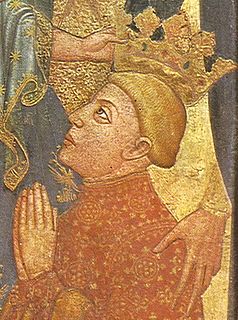
Ferdinand I named Ferdinand of Antequera and also the Just was king of Aragon, Valencia, Majorca, Sardinia and (nominal) Corsica and king of Sicily, duke (nominal) of Athens and Neopatria, and count of Barcelona, Roussillon and Cerdanya (1412–1416). He was also regent of Castile (1406–1416).
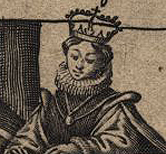
Constanza Manuel of Villena, was a Castilian noblewoman who by her two marriages was Queen consort of Castile and Infanta of Portugal.
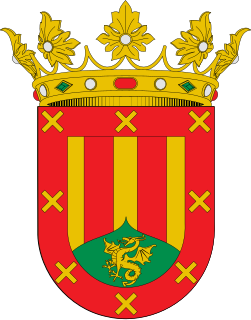
Duke of Alburquerque is a hereditary title in the Peerage of Spain, accompanied by the dignity of Grandee and granted in 1464 by Henry IV to Beltrán de la Cueva, his "royal favourite" and grand master of the Order of Santiago. It makes reference to the town of Alburquerque in Badajoz, Spain.
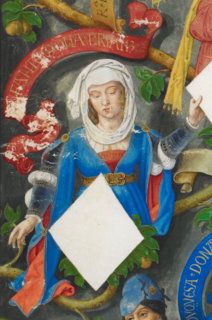
Beatrice of Portugal was Countess of Alburquerque as the wife of Sancho Alfonso of Alburquerque. She was the daughter of Peter I of Portugal and his wife Inês de Castro.

Eleanor, 3rd Countess of Alburquerque was Queen of Aragon by her marriage to Ferdinand I of Aragon. In Spanish, she is known as Leonor Urraca de Castilla, condesa de Alburquerque. She was the regent of Aragon during the absence of her son the king in 1420.

Sancho Alfonso of Castile (1342–1374), known in Spanish as Don Sancho Alfonso de Castilla, was Infante of Castile, 1st Count of Alburquerque.
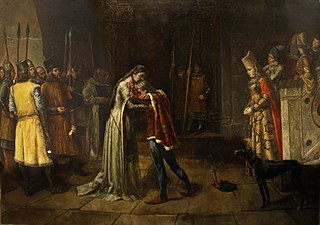
Leonor (Eleanor) de Guzmán y Ponce de León (1310–1351) was a Castilian noblewoman. After roughly 1330, she became the long-term mistress and favourite of Alfonso XI, with whom she had the illegitimate Henry "the Fratricidal", future first monarch of the House of Trastámara. She held the lordship of Medina-Sidonia until she fell from grace in the wake of Alfonso's death in 1350. She was thus ensuingly executed by her enemies.
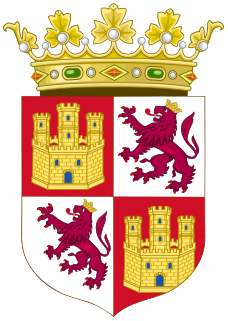
The House of Trastámara was a royal dynasty which first ruled in the Crown of Castile and then expanded to the Crown of Aragon in the late middle ages to the early modern period.

Maria of Castile was Queen of Aragon and Naples as the spouse of Alfonso V of Aragon. Maria acted as the regent of Aragon during the reign of her spouse, as he was absent during most of his reign; her regencies lasted between 1420 and 1423 and between 1432 and 1458. She was also briefly Princess of Asturias in her own right as the heir presumptive to the throne of Castile. She succeeded her father, Henry III of Castile, as Princess of Asturias in 1402.
Eleanor or Leanor of Aragon may refer to:
Peter, Infante of Aragón, Viceroy of Sicily (1424–1425) and Duke of Noto, was the sixth child of King Ferdinand I of Aragón and Countess Eleanor of Alburquerque.

The Infantes of Aragon is an appellation commonly used by Spanish historians to refer to a group of 15th-century infantes (princes) of the House of Trastámara, specifically the sons of King Ferdinand I of Aragon and his wife Eleanor of Alburquerque:

Infante Henry of Aragon, 1st Duke of Villena, 4th Count of Alburquerque, Count of Ampurias, was the Grand Master of the Order of Santiago.
La Cueva is the Spanish word for "cave" and is also used in the surname "de la Cueva". It can also refer to:
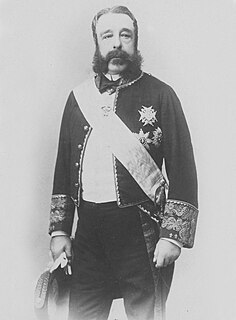
José Osorio y Silva, 9th Duke of Sesto, 16th Duke of Alburquerque, 17th Marquess of Alcañices, was a Spanish nobleman, politician and army officer. He was also known by one of his titles, Duke of Sesto, inherited from his father, and by nicknames Pepe Osorio or Pepe Alcañices. He was head and representative of the houses of Alcañices, Alburquerque and los Balbases, causing a personal union of sixteen noble titles and four grandee titles. He is also considered one of the most notable mayors of Madrid, serving from 1857 to 1864.